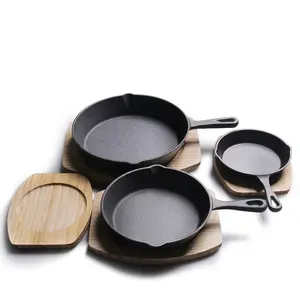Exploring Non Stick Pan Surfaces
Non stick pan surfaces have revolutionized the way we cook, making meal preparation easier and more enjoyable. These specialized surfaces are designed to prevent food from sticking, facilitating healthier cooking with minimal oil. Whether you are a home cook or a professional chef, understanding the ins and outs of non stick pan surfaces can enhance your culinary experience.
Types of Non Stick Pan Surfaces
Non stick pan surfaces come in various types, each with distinct characteristics suitable for different cooking needs. Here are the main types:
- Teflon Coated: One of the most common types, Teflon pans are easy to clean and provide excellent non stick performance.
- Ceramic Coated: A relatively newer option, ceramic pans are free from PTFE and PFOA, making them a safer choice for health-conscious individuals.
- Cast Iron with Enamel Coating: These pans offer the durability of cast iron with a non stick surface, perfect for searing and slow cooking.
- Hard Anodized Aluminum: Known for its scratch resistance, this type provides even heat distribution and is known for its robust performance.
Function, Features and Applications of Non Stick Pan Surfaces
Non stick pan surfaces provide a multitude of functions and features that cater to various cooking styles:
- Easy Release: Foods are easily released from the surface without much effort, allowing for a hassle-free cooking experience.
- Healthier Cooking: Requires less oil or fat for cooking, promoting a healthier lifestyle.
- Heat Distribution: Many non stick pans are designed to distribute heat evenly, preventing hot spots and ensuring perfect cooking results.
- Versatility: Ideal for a variety of cooking methods such as frying, sautéing, and even baking.
- Durability: Many modern non stick surfaces are designed to resist scratches and wear, extending their lifespan significantly.
Safety and Quality Considerations for Non Stick Pan Surfaces
When investing in non stick pan surfaces, safety and quality are paramount. Here are some essential considerations:
- Quality of Materials: Look for pans made with high-grade materials that are free from harmful chemicals like PFOA and lead.
- Temperature Resistance: Ensure the pan surfaces can withstand high temperatures without degrading or releasing toxins.
- Care and Maintenance: Proper care, such as using silicone or wooden utensils, can enhance the longevity of your non stick surface.
- Certification and Testing: Look for products that have undergone rigorous safety testing and meet industry standards.
In summary, non stick pan surfaces are an essential addition to any kitchen. Their various types, functions, features, and safety considerations provide powerful advantages for everyone from novice cooks to seasoned professionals. By selecting the right non stick pans and understanding how to maintain them, you can enjoy hassle-free cooking while achieving excellent culinary results.






















































